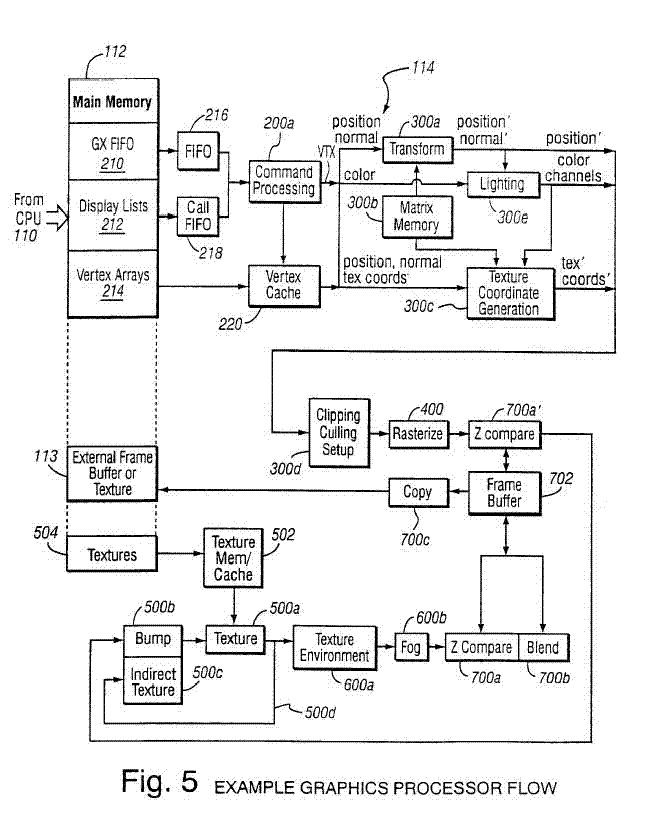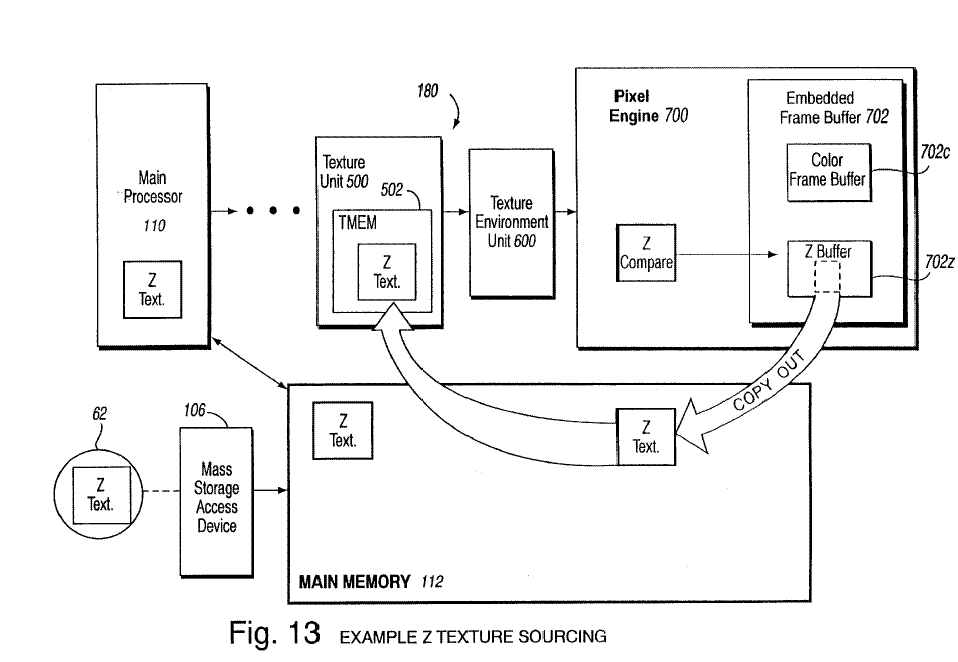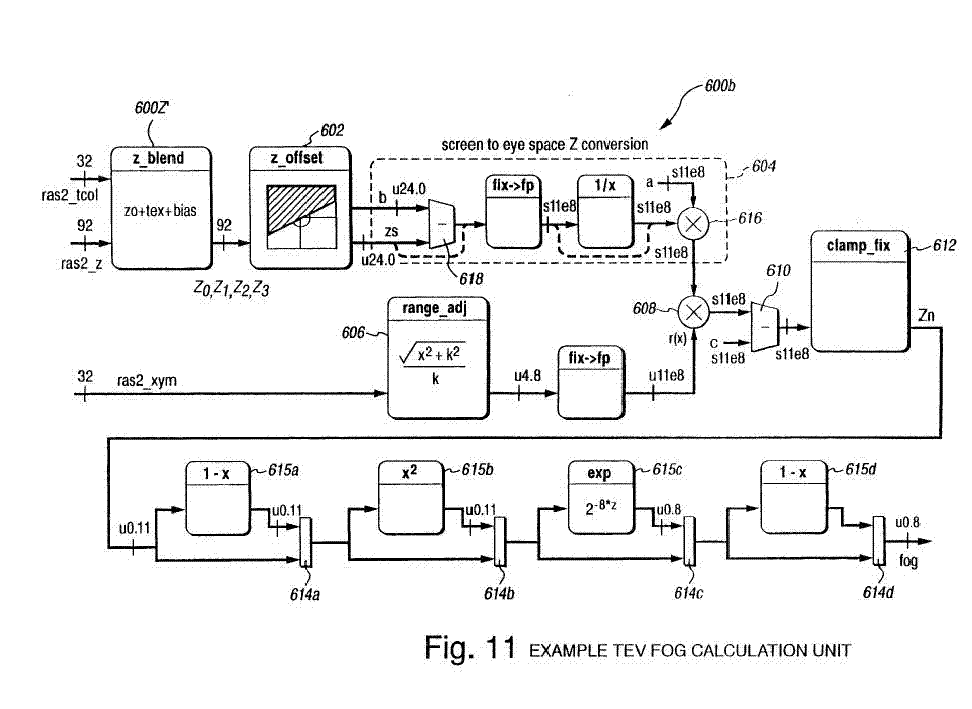Revolution Report escribió:Interview Exclusive: Revolution Report Talks with ATI about Hollywood
by Shawn White (01/11/06)
Following the Consumer Electronics Show 2006 held in Las Vegas, Nevada last week, Revolution Report had the opportunity to discuss Nintendo and its next-generation console, code-named the Nintendo Revolution, with the system's GPU provider ATI Technologies (
http://www.ati.com). The interview occurred between Revolution Report's Senior Editor Shawn White and ATI's Public Relations Manager for Consumer Products, John Swinimer.
Revolution Report: How long have you been working at ATI and what responsibilities does your job encompass?
John Swinimer: I've been working here since February 2001. Not as long as some of the people who've been working on the game console side. Certainly, its been very exciting. I was very, very excited and pleased to be able to stand up at Nintendo's booth back in 2001 at E3 and proudly wear one of the specially made ATI Dolphin shirts. I was very proud to be a part of that and I'm hoping the time comes where I can do that again. Since before the day I joined, we were working on building that relationship from that announcement. I work on other matters here too; I work on the digital TV side, the multimedia side, we have another division here that works on embedded display graphics. While ATI has other divisions, my responsibilities here go beyond ATI's desktop graphics division, to include ATI's other business units and ATI has many different divisions.
Revolution Report: Is Hollywood based off Flipper, a current or upcoming PC architecture, or built from the ground up?
Swinimer: Hollywood is a specific design and is in no way reflective of PC technology. Even when the Flipper chips came out, people were asking that question: "Is this a spin-off of something done on the PC?", and the answer is no. It is designed the same as the Flipper was -- from the ground up for a specific console. Totally different sort of architecture from what you might find on the PC. Certainly, there are some underlying values—you know, how you get graphics on the screen—that's there. It's not, for example, like we took a PC design and said 'oh, you know what? If we tweak this and test this, it will work in a console.' [That's] not the case.
Revolution Report: Considering the form factor of the Revolution, heating has become a concern. Has this been a challenge for ATI in development of Hollywood?
Swinimer: The form factor design of even some of the newer consumer electronics devices are getting smaller and smaller, and we are taking that into great consideration, all across the board. I don't know if you are aware of this, but ATI has graphics chips in Motorola RAZRs. ATI has graphics chips inside many consumer electronic designs and heat is definitely a consideration, so we definitely take that into consideration when we are designing new chips. There's a lot of technology you can put into the chip now that can reduce the level of [heat] output.
For example, on a totally different side note, on our PC side we are very conscious of that and we try to, over the course of the design of a PC chip, get it to the point where you do not need a fan. These are things we have to take into consideration. Putting a fan on PC cards, retail cards such as ATI’s Radeon cards, adds more cost and complexity to the design of the chip. If we can get the design to the point where you don't need the fan to keep it cool, you've exceeded on a number of different levels. ATI in general is very conscious of this when we are working with not only PC vendors, but also consumer electronics manufacturers.
Revolution Report: A number of Web sites have inferred that Revolution will be significantly inferior graphically. While it certainly seems like Revolution won't output in HD, is it safe to assume that Hollywood will not feature a comparable polygon count or the same amount of graphical effects as the Xbox 360's GPU?
Swinimer: What I can say is that ATI is focused, as is Nintendo, in making [Revolution] a great, gaming entertainment platform. I know that a lot of journalists are very focused on specs. It's the big thing; as a geek, I look for that too. The key thing to keep in mind is that Nintendo, with ATI's help, is trying to create a game console where you don't have to look at [specs].
From a broader perspective, we share in Nintendo's position that this console will be devoted to the general gamer. When you have a game developer developing [for] this, the goal is to ensure that they don't have to worry about the complexity that is required to develop the games by making them "jump through hoops." That was one of the benefits of working on the GameCube; developers were saying that it is quite easy to develop for and there are not a lot of complexities so they could produce titles easily. That being said, we want consumers to look at the game, play the game and be involved in it. We are doing our very best to make this Nintendo gaming experience the very best it can be.
Revolution Report: Is Hollywood finalized? If not, when is work expected to be finished?
Swinimer: I know that Nintendo has committed to 2006 availability. Certainly, game developers need some time to start developing games for it. I can't say anything more than that.
Revolution Report: Have you had the opportunity to demo the Revolution controller yourself?
Swinimer: No I haven't. I have seen the video of it. And believe it or not, there was someone on the Web that put together a paper cut-out.
Revolution Report: Yes, I actually made one of those, it was quite interesting.
Swinimer: I did too. So I showed it off to people by saying: 'Hey, look at this, it’s pretty cool.' People are sort of skeptical whether this can actually work, but looking at the videos and certainly based what Nintendo has promised, it has a lot of potential. I think game developers will realize that over time, it’s a great way to attract more general gamers, casual gamers.
Revolution Report: Do you expect there will be an ATI sticker on each Revolution like we saw with GameCube?
Swinimer: That was a very unique situation. However, ATI in general tries to do cooperative marketing when possible. For example, there are laptops that include ATI stickers and now this co-marketing is extending to televisions. So if it makes sense for the chip and from a consumer perspective, certainly we would be very glad for that logo process to happen. But I can't comment on whether or not that will that will happen at this time.
Having the ATI logo on Nintendo Gamecube was a very nice thing, though. In fact, I don't know if you ever saw the chip on the motherboard, but the chip actually had the ATI logo. It was ATI's new current logo. That was the very first instance of it ever appearing. At the time it came out, ATI was still using the old logo, so it took some time for the rest of the company to catch up. So the GameCube was revolutionary in many respects with that branding of ATI's logo. I thought that was quite interesting.
Revolution Report: What is the difference between making graphics cards for PCs and graphics chips for consoles?
Swinimer: There are different, unique aspects to it. There are complexities that are required. The underlying value is there -- getting pixels on the screen. that's the bottom line. Beyond that, you have to consider other things about the audio, and about the form factor. When working on a PC, there are industry specifications or standards that you have to adhere to. There are video standards; there are actual requirements when you put it on a PC.. When you are working on the console space, those specifications are not as rigid..
Revolution Report: There's more flexibility?
Swinimer: Yes, there's more flexibility in design. With PCs, it's a little more regimented. If a manufacturing PC customer comes to you and says, 'I want you to design a board or chip for me that helps me solve this problem,' we know exactly what is going on and have pre-made plans. From a console point, you can extrapolate some of those technologies, but you are sort of working free-form with what the customer requires, which can be an exciting prospect.
Revolution Report: Any closing comments about the Hollywood chip?
Swinimer: I think it's too early to provide more information. As you can respect in a customer relationship, as in all our customer relationships, we don't want to pre-announce what the customer intends to do. So we have to wait and see what Nintendo plans to announce and we will support them with whatever we can when the time comes.
Revolution Report: Thank you for your time Mr. Swinimer and have a good day.
Swinimer: Will do, I hope to chat with you in the future.
Revolution Report would like to thank John Swinimer for his time and insight. Stay tuned for more regarding Nintendo's next-generation console.



![burla2 [burla2]](/images/smilies/nuevos/burla_ani1.gif)

![Que me parto! [qmparto]](/images/smilies/net_quemeparto.gif)
![Que me parto! [qmparto]](/images/smilies/net_quemeparto.gif)
![Que me parto! [qmparto]](/images/smilies/net_quemeparto.gif)
![Que me parto! [qmparto]](/images/smilies/net_quemeparto.gif)
![burla2 [burla2]](/images/smilies/nuevos/burla_ani1.gif)

![Adorando [tadoramo]](/images/smilies/adora.gif)
![demoniaco [sati]](/images/smilies/nuevos2/demonio.gif)
![Que me parto! [qmparto]](/images/smilies/net_quemeparto.gif) .
.
![Que me parto! [qmparto]](/images/smilies/net_quemeparto.gif)
![guiñando [ginyo]](/images/smilies/nuevos/guinyo_ani1.gif)

![calabaza [hallow]](/images/smilies/nuevos/hallowen.gif)
![loco [looco]](/images/smilies/nuevos2/borracho.gif)
![guiñando [ginyo]](/images/smilies/nuevos/guinyo_ani1.gif)
![loco [mad]](/images/smilies/nuevos/miedo.gif) comodigeron en otro pors van a ser macburger
comodigeron en otro pors van a ser macburger ![loco [looco]](/images/smilies/nuevos2/borracho.gif)
![guiñando [ginyo]](/images/smilies/nuevos/guinyo_ani1.gif)
 (que no lo sé eh, solo pregunto porque tengo vagos recuerdos de haberlo leido por ahí)
(que no lo sé eh, solo pregunto porque tengo vagos recuerdos de haberlo leido por ahí) ![demoniaco [sati]](/images/smilies/nuevos2/demonio.gif) ) y voy a centrarme en mirar juegos, que creo que al fin y al cabo, es de lo que se trata, ¿no?
) y voy a centrarme en mirar juegos, que creo que al fin y al cabo, es de lo que se trata, ¿no?
![maloso [666]](/images/smilies/nuevos2/masmalo.gif)



![guiñando [ginyo]](/images/smilies/nuevos/guinyo_ani1.gif)
![toma [tomaaa]](/images/smilies/nuevos2/tomaa.gif)
![guiñando [ginyo]](/images/smilies/nuevos/guinyo_ani1.gif)

![guiñando [ginyo]](/images/smilies/nuevos/guinyo_ani1.gif)
![guiñando [ginyo]](/images/smilies/nuevos/guinyo_ani1.gif)







![otro q duerme [maszz]](/images/smilies/nuevos2/dormido.gif)